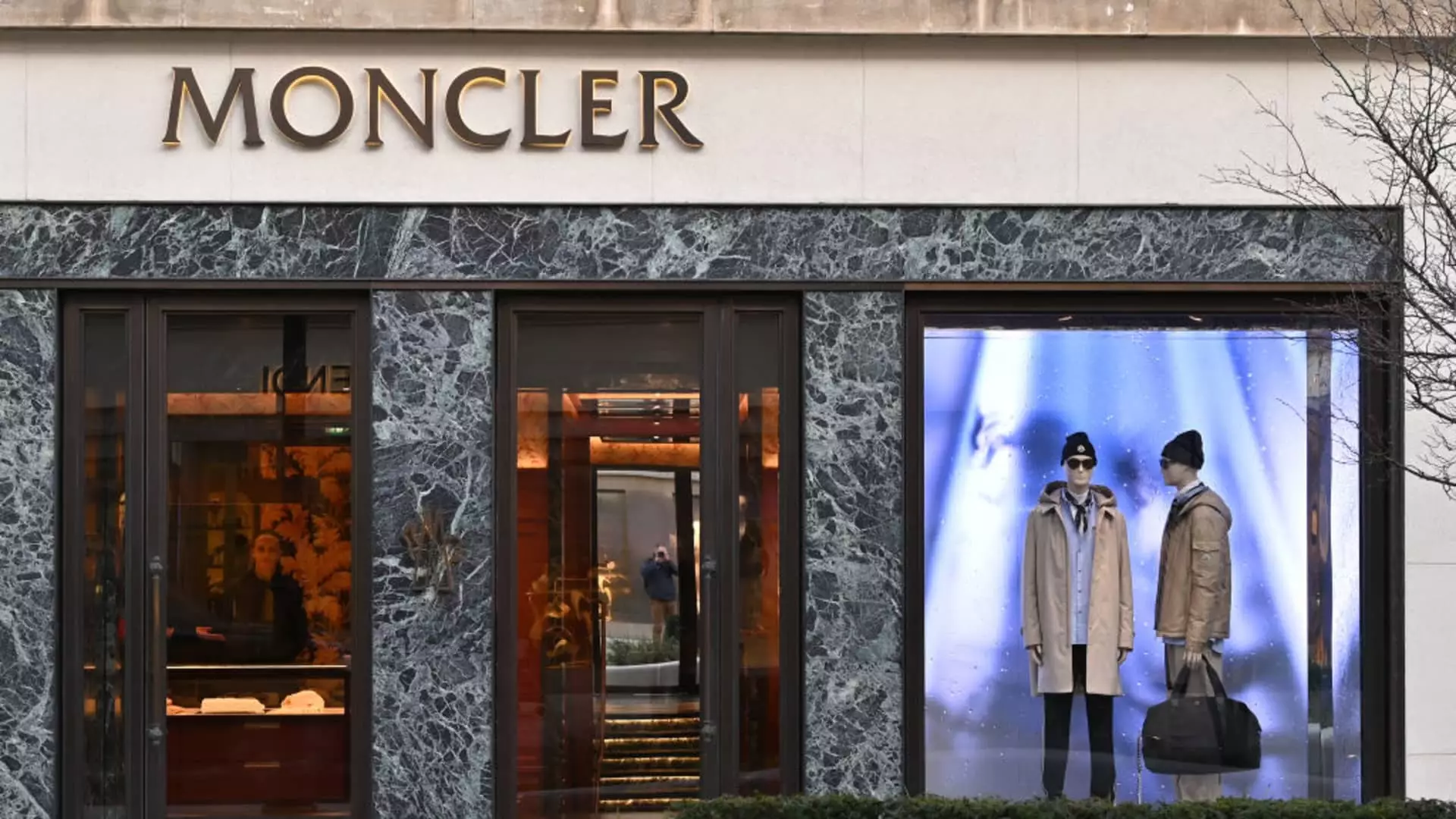In an era where economic stability feels increasingly elusive, even iconic brands like Moncler are beginning to grapple with the harsh realities of a fragile global economy. The celebrated Italian luxury house, renowned for its high-end outerwear, is signaling that it faces more than just the usual challenges — it is confronting the unpredictable tremors caused by American tariffs and shifting consumer behaviors. Their latest disclosures reveal a company that is treading carefully, nuanced by cautious optimism but haunted by the specter of economic downturns. For a brand that has historically thrived on exclusivity and high margins, this cautious approach signals a deeper malaise—trust in growth is waning, and resilience is being tested.
The company’s recent decision to implement minimal price increases reflects an uneasy balancing act. Luxury brands often rely on maintaining perceived value, but in turbulent economic times, even small hikes can act as deterrents to their core clientele. Moncler’s strategy to raise prices by mid-single digits is a gamble—an attempt to mitigate the initial shock of tariffs without alienating its customer base. Yet, as market conditions become increasingly unpredictable, this moderate approach might not be enough to sustain profitability or growth. Their strategic uncertainty about the upcoming years underscores an industry that is increasingly vulnerable to macroeconomic shocks, and Moncler’s future hinges on factors outside its control.
Tariffs and Currency Fluctuations: A Double-Edged Sword
The impact of U.S. tariffs looms large over luxury brands like Moncler, serving as a constant reminder of how political decisions ripple through global supply chains. The brand’s comment that they are waiting for clarity before finalizing their 2026 strategy exposes a larger truth: political instability and trade wars threaten to derail even the most careful planning. While the company claims that their price adjustments are designed to “offset” tariff effects, the truth is that the burden may be insurmountable. When tariffs inflate input costs and currency fluctuations further distort economic signals, luxury brands are caught in a vise—struggling to maintain margins while preserving customer goodwill.
The fluctuations in currency, particularly the rebalancing of the Japanese yen and other key markets, exacerbate the problem. Asia, as a vital market for Moncler, appears to be entering a state of stagnation, if not decline. That sales remained flat, with Japan’s negative trajectory, highlights a broader trend: affluent consumers are becoming more cautious, influenced not only by tariffs but also by a changing geopolitical landscape. This mounting uncertainty makes the luxury sector’s recovery promises seem increasingly fragile. Moncler’s dependence on a fluid macroeconomic environment is at odds with its aspirational image, which relies on a stable and predictable economic climate.
The Illusion of Growth and the Reality of Consumer Fatigue
While Moncler reports a modest 1% dip in quarterly revenues, beneath the surface lies a more troubling narrative. The luxury sector’s reliance on tourist spending and the affluent’s willingness to splurge is no longer a given. Weak tourist flows, particularly in Europe and parts of Asia, reveal the limits of luxury’s growth model, heavily dependent on external factors often beyond the brands’ control. What was once seen as a bubble poised to expand continuously is revealing signs of deflation—an erosion of consumer appetite driven by economic fears and market saturation.
More worrying is the rising concern about consumer pricing psychology. The company’s acknowledgment that “pricing today for consumers is a concern” signals a shift in buyer sentiment. For luxury brands, this is dangerous territory: once exclusivity turns into perceived elitism that customers feel they cannot afford, brands risk losing their cachet. Moncler’s strategic hesitation, especially regarding store openings planned for 2026, underscores how fragile its future expansion prospects are. It is not a matter of ambition but of necessity; brands must adapt or face obsolescence in a climate where consumer loyalty is increasingly fragile.
Resilience or Reckoning? The Future of Luxury Is Still in Flux
As Moncler attempts to navigate this increasingly volatile landscape, it becomes clear that the luxury industry’s future is uncertain at best. While some may see this as a sign of resilience—cautiously adjusting prices, delaying store openings, and rebalancing efforts—others might interpret it as impending decline. The sector’s traditional growth levers are diminishing, pressed down by geopolitical tensions, economic slowdowns, and changing consumer priorities. Luxury brands that once relied on the allure of exclusivity and status must now prove their adaptability in an era that demands genuine value over superficial prestige.
It is also worth questioning whether Moncler, with its reliance on optimistic forecasts and cautious strategic shifts, is truly prepared for the storm ahead. The hesitation to finalize plans for 2026 points to an industry still in denial about the severity of current trends. Without a bold reimagining of their strategy—one that balances price, innovation, and genuine customer engagement—luxury brands risk becoming relics of a bygone era. The resilience of brands like Moncler will depend on their ability to navigate economic turbulence with agility, honesty, and a profound understanding that the luxury consumer of today is far more discerning and cautious than ever before.

